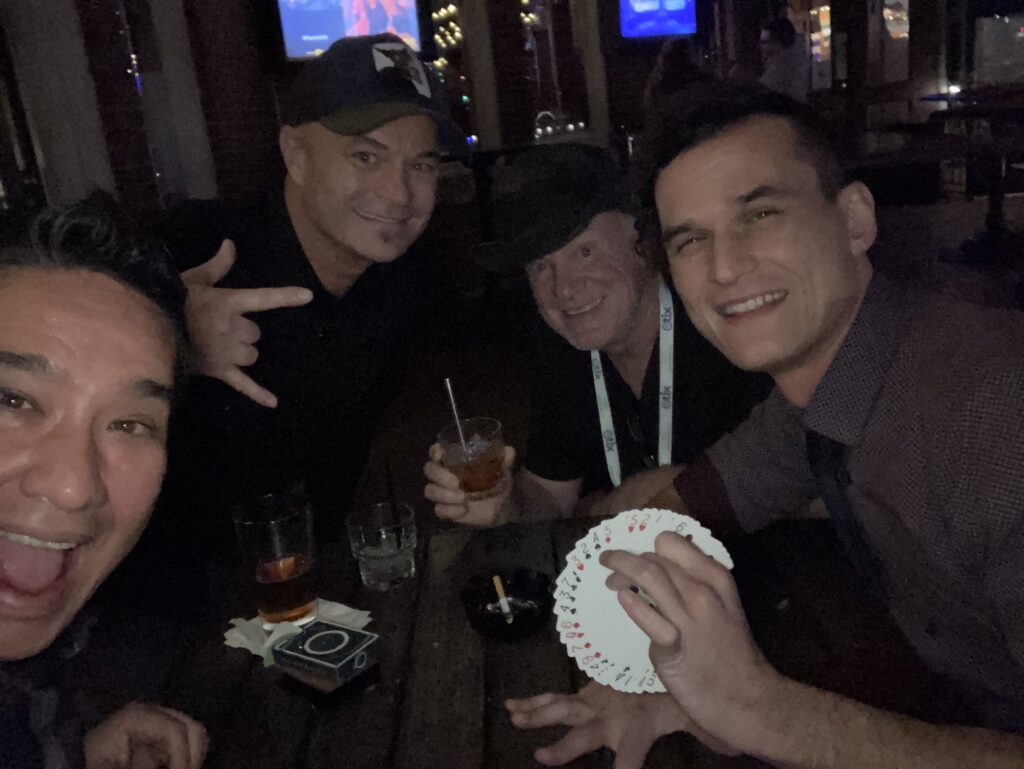The other day I wrote about working on a variation of Alan Wakeling‘s trick Aces Front. Here’s the rough outline of the sequence of events:
I think the sequence is good, where I think there’s a sense of progression. For the first card, I do touch the deck before it goes into the glass. For the second card, it happens with the deck in the glass the whole time and then the card rise for the final card.
What’s fun is my starting point was something like Aces Front, but my end point is something completely different than Aces Front. I always love it when there are a couple of twists in working on a variation of an existing trick that leads you to something completely new.
-Louie

